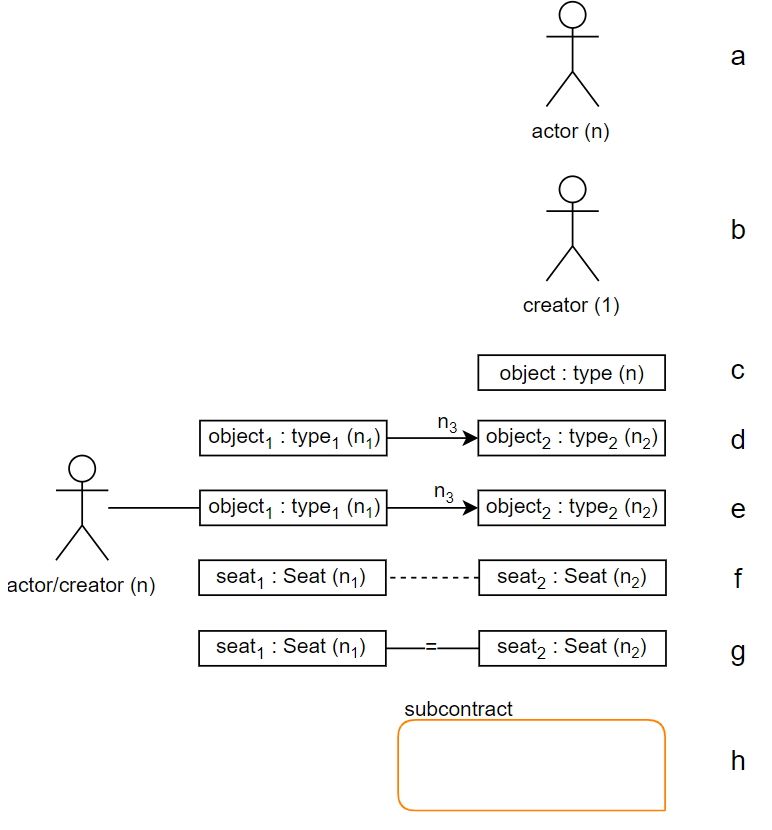-
a
-
Represents a non-creator called 'actor'.
-
To achieve the goal of the smart contract, there should be n actor(s).
-
-
b
-
Represents a creator, which is the entity that started the instance of the smart contract.
-
There is exactly 1 creator.
-
-
c
-
Represents an object called 'object' of type 'type'.
-
There can be n instance(s) of 'object' for 1 instance of the smart contract.
-
-
d
-
An object called 'object1' of type 'type1' can generate n3 instance of an object called 'object2' of type 'type2'.
-
There can be n1 instance(s) of 'object1' for 1 instance of the smart contract.
-
There can be n2 instance(s) of 'object2' for 1 instance of the smart contract.
-
-
e
-
An actor/creator can use 1 instance of an object called 'object1' of type 'type1' to generate n3 instance of an object called 'object2' of type 'type2'.
-
There can be n1 instance(s) of 'object1' for 1 instance of the smart contract.
-
There can be n2 instance(s) of 'object2' for 1 instance of the smart contract.
-
-
f
-
Seat 'seat1' and seat 'seat2' trade with one another.
-
There can be n1 instance(s) of 'seat1' for 1 instance of the smart contract.
-
There can be n2 instance(s) of 'seat2' for 1 instance of the smart contract.
-
-
g
-
Seat seat1 and seat seat2 are equal to one another.
-
There can be n1 instance(s) of 'seat1' for 1 instance of the smart contract.
-
There can be n2 instance(s) of 'seat2' for 1 instance of the smart contract.
-
-
h
- The smart contract uses another smart contract called "subcontract", of which all related objects are positioned in the orange box.
